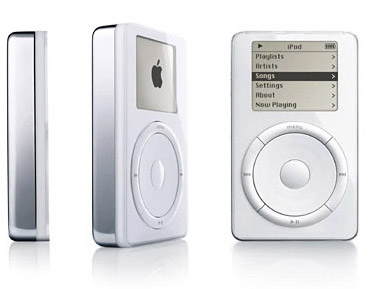Invalid input. Special characters are not supported.
See part 1 of this blog: 2024 Predictions in storage, technology, and the world, part 1: the AI hype is real!
Prediction 2: The beginning of the end game for HDD
Over the past twenty years, NAND flash, typically in the form of SSDs, has steadily replaced hard drives in nearly every application. Remember the early iPods and their HDDs? Or, maybe you remember waiting minutes for your PC to boot up. If you are a database administrator you would remember using 15K or 10K RPM HDDs to try to squeeze out enough IOPS to complete your database queries in a reasonable amount of time. All of these were applications that used large amounts of HDD and are now obsolete. So, for the most part there are only two remaining applications for HDD – slow tier data center or cloud storage, and surveillance camera video storage.
These applications still work well for HDDs – as HDDs are really a one trick pony. They deliver a lot of data storage very cheaply. For applications that have a highly sequential workload and are not performance critical for reading or fetching data, HDDs are still king. And there is a TON of data out there still running on HDDs, but as Bob Dylan said, “The times they are a-changin’.” Because new applications like artificial intelligence (AI) and database analytics require meaningfully faster access to all the data in the data center, because SSDs are now bigger and denser than even the most dense nearline HDDs, and because the most precious commodity in the data center now is rack power, and often times the available space in a rack that can be adequately cooled
When Micron introduced the Micron 6500 ION SSD, the world’s first 200+ layer NAND data center NVMe™ SSD, we brought to market a low-cost, high-performance storage device that delivers 4.8TB per cubic inch. That’s nearly 5 times more storage per cubic inch than the densest 24TB nearline HDD delivers today!
Now when cloud companies are trying to figure out how to install all the AI training and inference systems on top of all the compute and storage their data centers need, saving 5x on rack space sounds compelling. Not to mention that for a given amount of work, an HDD uses around 2500 times more energy than an SSD and that translates directly into more power and cooling available for compute and other applications. In fact, Swapna Yasarapu and Shashidhar Joshi gave an interesting presentation at the 2023 Storage Developer Conference outlining new opportunities in cloud storage for solid state drives.
Now don’t get me wrong – HDDs are going to be here for a VERY long time as NAND fab capacity buildout occurs and NAND costs come down to make the TCO even more compelling across colder applications. But even small conversions in the data center from nearline HDD to SSD are meaningful as SSD is projected to represent only 12% of the bits in data centers in 2024 according to IDC . Early movers who have the vision to pay a higher price per bit and lock up supply of high capacity SSDs will get the TCO benefits over their competition and be able to drive their storage up with less burden on data center power, cooling, and floor space.
Prediction 3: Data center NVMe SSDs supporting PCIe® Gen5 will finally get their time in the sun
The adoption of PCIe Gen5 drives in the data center has been meaningfully slower than many in the industry assumed. The lack of adoption is primarily due to technical challenges and value proposition. Technical challenges were both: directly related to enabling the broad compatibility between hosts and endpoints due to the more challenging signal integrity associated with 32 gigatransfers per second (GT/s) which doubled the prior speed of PCIe Gen4, and indirectly, due to a number of factors including:
- Delays of the processors and platforms that supported PCIe Gen5.
- Underwhelming TCO of those platforms for virtualized and containerized environments compared to the prior generation of processors.
- Lack of high speed ethernet adapter deployment meaning NICs have been the bottleneck vs. storage in many servers, and particularly high-capacity servers.
* The approximate throughput for Gigabit Ethernet without jumbo frames and using TCP is around 928Mbps or 116MB/s.
The bottom line is that there has simply been a lack of sockets and a lack of a compelling reason to pay the early adopter premiums that PCIe Gen5 NVMe SSDs are carrying.
But the rapid increase of AI systems as a percentage of servers (for instance, TrendForce forecasts that AI Servers as a percentage of total servers will double from 2022 to 2024), the introduction of second generation server CPUs supporting PCIe Gen5 from leading CPU manufacturers, and the introduction of better PCIe Gen5 SSDs, capable of saturating the PCIe Gen5 link on random workloads, from more vendors are likely to drive the increased adoption and shipment of PCIe Gen5 based NVMe SSDs in the second half of 2024.
PCIe Gen5 drives offer significant advantages in terms of performance, scalability, and efficiency for data-intensive applications such as AI. However, the adoption of these drives in the data center has been hindered by various technical and economic factors. As these challenges are overcome by the industry, and as the demand for AI systems grow, we expect to see a surge in the deployment of PCIe Gen5 based NVMe SSDs exiting 2024. These drives will enable faster and smarter data processing, analysis and decision making, and will provide a competitive edge for data center operators and customers.
1 The History of the iPod timeline | Timetoast timelines
2 62,500 Read IOPS/W (Micron 6500 ION datasheet value) vs. 25.3 read IOPS/W (public datasheet value for Seagate Exos 2X18 dual actuator HDD as of May 2023).
3 New Cloud Workloads Implications for Storage Media Futures (storagedeveloper.org)







